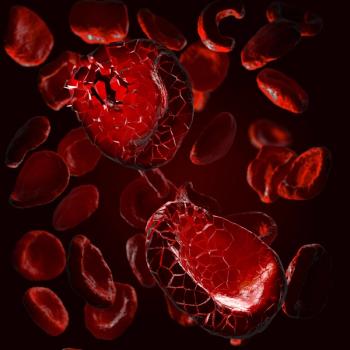
Oncology NEWS International
- Oncology NEWS International Vol 11 No 1
- Volume 11
- Issue 1
NMDP Launches Minority Cord Blood Recruitment Initiative
MINNEAPOLIS-Give Life Twice. That’s the message behind a new National Marrow Donor Program (NMDP) pilot project designed to increase the number of minority umbilical cord blood units listed on the NMDP Registry. Patients of minority race and ethnicity are less likely than Caucasians to find a matched donor in the Registry, the NMDP said in a press release. The NMDP’s goal is to collect 2,000 units of cord blood from African-American, Hispanic/Latino, and Asian/Pacific Islander donors.
MINNEAPOLISGive Life Twice. That’s the message behind a new National Marrow Donor Program (NMDP) pilot project designed to increase the number of minority umbilical cord blood units listed on the NMDP Registry. Patients of minority race and ethnicity are less likely than Caucasians to find a matched donor in the Registry, the NMDP said in a press release. The NMDP’s goal is to collect 2,000 units of cord blood from African-American, Hispanic/Latino, and Asian/Pacific Islander donors.
Four NMDP Cord Blood Banks are participating in the project: Bonfils Cord Blood Services, collecting units in Denver, Boulder, and Colorado Springs, Colorado; Children’s Hospital of Orange County Cord Blood Bank, collecting units in Orange County, California; LifeCord, collecting units in Montgomery, Alabama and Gainesville, Florida; and St. Louis Cord Blood Bank, collecting units in the greater St. Louis, Missouri area.
Articles in this issue
almost 24 years ago
ODAC Sends Mixed Message on New Gliadel Wafer Indicationalmost 24 years ago
ONCC Certification Test Results Are Announcedalmost 24 years ago
Rituximab Ups Survival in Aggressive and Indolent NHLalmost 24 years ago
Topotecan Used in Aggressive Front-Line Therapy for SCLCalmost 24 years ago
Depsipeptide Shows Activity in T-Cell Lymphomaalmost 24 years ago
FDG-PET Useful in Newly Diagnosed and Recurrent NSCLCalmost 24 years ago
Adjuvant Anastrozole Superior to Tamoxifen in Huge ATAC Breast Cancer Trialalmost 24 years ago
ODAC Backs Adding HER-2 DNA Test to Herceptin Package Insertalmost 24 years ago
FDA and VA Plan Joint AIDS Studyalmost 24 years ago
Breast Conservation Increases With On-Site Radiation UnitNewsletter
Stay up to date on recent advances in the multidisciplinary approach to cancer.





















































































